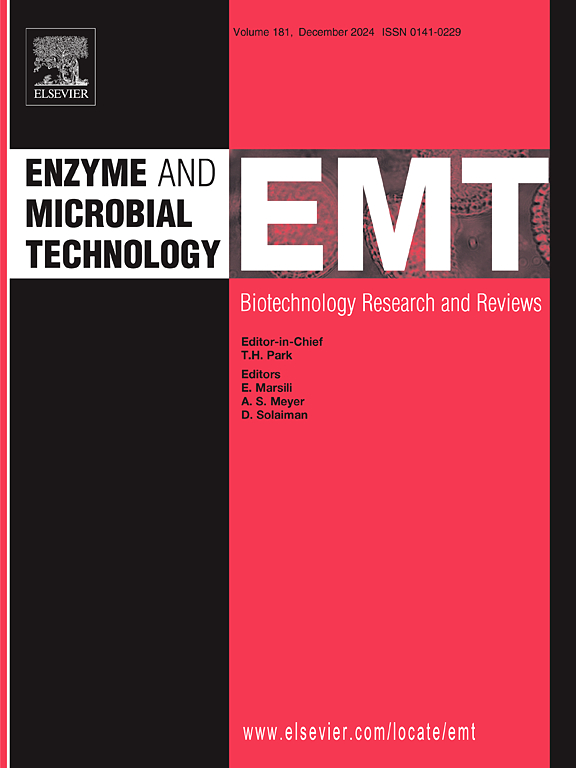单独强,一起弱:袋鼠大鼠洞中的生物膜拉伸强度
IF 3.7
3区 生物学
Q2 BIOTECHNOLOGY & APPLIED MICROBIOLOGY
引用次数: 0
摘要
沙漠袋鼠鼠(Dipodomys deserti)建造洞穴,创造有利于增加微生物活性和生物膜形成的受保护的微生态位。这些洞穴中的生物膜将沙子颗粒结合在一起,增加了洞穴沙子的抗拉强度和洞穴的稳定性。我们的前期工作表明:1)由于生物膜的胶结作用,袋鼠鼠洞砂具有比周围表面砂更高的抗拉强度;2)表征了袋鼠鼠洞砂内的微生物生物膜群落,并分离出丰富的微生物。在这项研究中,分离物种被用来量化使用微悬臂技术的纯和混合生物膜的抗拉强度。单种生物膜抗拉强度最高的是柽柳曲霉(59.30 ± 4.36 kPa),最低的是烟酸新杆菌(9.45 ± 1.98 kPa)。双物种生物膜表现出协同或拮抗作用,这取决于物种组合。烟芽孢杆菌与冷冻大芽孢杆菌混合后的抗拉强度可达55.11 ± 2.51 kPa,而tamarii与烟芽孢杆菌混合后的抗拉强度可达18.98 ± 2.54 kPa。混合多达五种物质将抗拉强度降低到最小值2.16 kPa。结果表明,单独形成的生物膜具有较高的抗拉强度,但混合形成的生物膜抗拉强度降低,使生物膜变弱。本文章由计算机程序翻译,如有差异,请以英文原文为准。
Strong alone, weak together: biofilm tensile strength in kangaroo rat burrows
Desert kangaroo rats (Dipodomys deserti) construct burrows that create protected micro-niches favorable to increased microbial activity and biofilm formation. Biofilms within these burrows bind sand particles together, increase the tensile strength of the burrow sand and burrow stability. Our previous work 1) demonstrated that kangaroo rat burrow sand exhibits higher tensile strength than surrounding surface sand due to the cementation by biofilms, and 2) characterized the microbial biofilm communities within kangaroo rat burrow sand and isolated abundant microorganisms. In this study, isolated species are used to quantify tensile strength of pure and mixed biofilms using the microcantilever technique. Mono-species biofilms of Aspergillus tamarii (59.30 ± 4.36 kPa) exhibited the highest tensile strength, while Neobacillus niacini (9.45 ± 1.98 kPa) showed the lowest. Dual-species biofilms displayed synergistic or antagonistic effects, depending on species combinations. Mixing N. niacini with Peribacillus frigoritolerans increased tensile strength to 55.11 ± 2.51 kPa, whereas combining A. tamarii with N. niacini reduced the tensile strength to 18.98 ± 2.54 kPa. Mixing up to five species reduced tensile strength to a minimum value of 2.16 kPa. We conclude that biofilms formed by microbial isolates from burrow sand individually had higher tensile strength, but when all were mixed, the tensile strength decreased, making them weaker.
求助全文
通过发布文献求助,成功后即可免费获取论文全文。
去求助
来源期刊

Enzyme and Microbial Technology
生物-生物工程与应用微生物
CiteScore
7.60
自引率
5.90%
发文量
142
审稿时长
38 days
期刊介绍:
Enzyme and Microbial Technology is an international, peer-reviewed journal publishing original research and reviews, of biotechnological significance and novelty, on basic and applied aspects of the science and technology of processes involving the use of enzymes, micro-organisms, animal cells and plant cells.
We especially encourage submissions on:
Biocatalysis and the use of Directed Evolution in Synthetic Biology and Biotechnology
Biotechnological Production of New Bioactive Molecules, Biomaterials, Biopharmaceuticals, and Biofuels
New Imaging Techniques and Biosensors, especially as applicable to Healthcare and Systems Biology
New Biotechnological Approaches in Genomics, Proteomics and Metabolomics
Metabolic Engineering, Biomolecular Engineering and Nanobiotechnology
Manuscripts which report isolation, purification, immobilization or utilization of organisms or enzymes which are already well-described in the literature are not suitable for publication in EMT, unless their primary purpose is to report significant new findings or approaches which are of broad biotechnological importance. Similarly, manuscripts which report optimization studies on well-established processes are inappropriate. EMT does not accept papers dealing with mathematical modeling unless they report significant, new experimental data.
 求助内容:
求助内容: 应助结果提醒方式:
应助结果提醒方式:


